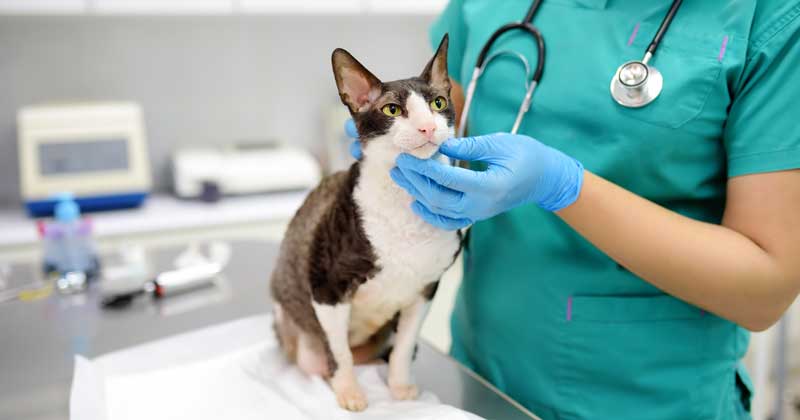18 Mar 2022
Vet nurse allergy clinics – supporting dermatology patients
John Redbond explains the importance of VN clinics, how they can be run, and the role they play in aiding the vet and client.

Image © ulkas / Adobe Stock
The veterinary nurse has a vital role to play in improving the life of the allergic patient – and a bespoke dermatology clinic can be a significant step in easing the caseload within a busy practice.
Pruritus is shown to affect 30% to 40% of all canine cases, and up to one in five feline ones, in practice, with allergy accounting for 10% of canine patients presenting with dermatological signs and the majority of pruritic cats1,2.
VNs have the ability to assist the vet in the diagnosis and treatment of allergic patients, and offer the in-depth support needed to manage them long term, helping to spread the workload.
Making better use of VNs’ skills and time in this way not only helps to improve the journey of a patient with an allergy, but offers a more satisfactory outcome for owners through better education and management of their pets’ condition, all while growing revenue for the practice.
Ideal versus reality
In an ideal world, vets would be able to take time to complete a comprehensive dermatological history vital to the correct diagnosis of allergy in a patient, before conducting the tests necessary to rule out other causes of skin disease and confirm allergy as the underlying cause.
They then have the option to facilitate the appropriate use of serology (often viewed as a quick route to diagnosis) or intradermal skin tests to identify the relevant sensitivities once allergy has been ascertained, before discussing treatments with owners to keep them informed of their options, as well as spending the necessary time discussing the lifelong implications of allergic skin disease and supporting owners on their journey.
However, all of this can present a major challenge, given the time constraints of first opinion practice. Even if it is possible to facilitate the lengthy process of diagnosis, enough time is rarely available to talk through treatment options and provide the long-term support to which owners should be entitled.
This is where the role of the VN can be pivotal; VNs can gather a full dermatological history and perform the tests needed, as well as discuss treatment with owners and improve support. This is all within their remit and is covered by the Veterinary Surgeons Act 1966 (Schedule 3 Amendment) Order 2002, which allows a directing veterinary surgeon to delegate medical treatment or minor surgery to a nurse3.
This can hugely ease the burden on vets, as well as help facilitate better outcomes for patients through competent guidance to achieve good owner compliance.
This article aims to not only outline the best possible journey to reach the right conclusions for the allergic patient, but to explore how effective delegation allows the VN to play a massive role in improving outcomes in the longer term.

Conclusion
Not only does a nurse-led dermatology service from initial work-ups to communication on diagnosis and treatment give clients a new level of enthusiastic and in-depth treatment, it offers the owners of pets with difficult-to-diagnose and complicated skin conditions the time and energy they require.
The result is a service that is appreciated by owners as well as by practice staff who know a dedicated service is available for dermatology cases – a significant proportion of the cases seen in practice.
References
- Hill PB et al (2006). Survey of the prevalence, diagnosis and treatment of dermatological conditions in small animals in general practice, Vet Rec 158(16): 533-539.
- Hobi S et al (2011). Clinical characteristics and causes of pruritus in cats: a multicentre study on feline hypersensitivity-associated dermatoses, Vet Derm 22(5): 406-413.
- RCVS (2021). RCVS Code of professional conduct for veterinary surgeons. 18. Delegation to veterinary nurses, https://bit.ly/3h9qCga
- Hensel P et al (2015). Canine atopic dermatitis: detailed guidelines for diagnosis and allergen identification, BMC Vet Res 11: 196.
- Favrot C et al (2010). A prospective study on the clinical features of chronic canine atopic dermatitis and its diagnosis, Vet Dermatol 21(1): 23-31.
- Olivry T et al (2019). Critically appraised topic on adverse food reactions of companion animals (7): signalment and cutaneous manifestations of dogs and cats with adverse food reactions, BMC Vet Res 15(1): 140.
- Tiffany S et al (2019). Assessment of dog owners’ knowledge relating to the diagnosis and treatment of canine food allergies, Can Vet J 60(3): 268-274.
- Richard EW et al (2012). Canine atopic dermatitis: using the latest research to improve therapeutic outcomes, WSAVA/FECAVA/BSAVA World Congress 2012, www.vin.com/apputil/content/defaultadv1.aspx?id=5328360&pid=11349
Meet the authors
John Redbond
Job Title